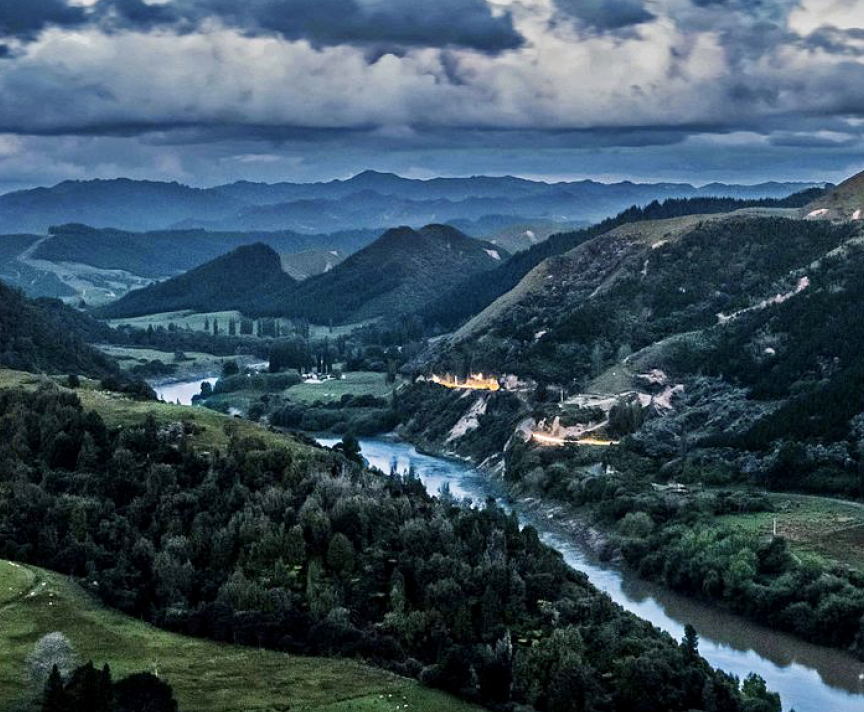
The
river rises on the northern slopes of Mount Tongariro,
one of the three active volcanoes of the central
plateau,It flows to the north-west before turning
south-west at Taumarunui.
From here it runs through the rough, bush-clad hill
country of the King Country before turning south-east
and flows past the small settlements of Pipiriki and
Jerusalem before reaching the coast at Whanganui.
It is one of the country's longest navigable rivers and
was first explored by Tamatea, one of the leaders of the
original migration to the new land, who travelled up the
river and on to Lake Taupō. Many places along the river
are named in his honour.
The river was an important communication route to the
central North Island, both for Māori and for settlers,
despite many stretches of white water and over 200
rapids. Prior to the arrival of European colonists, the
area around the Whanganui watershed was the home for a
large proportion of Māori villages in pre-European
times. As such, it is regarded as taonga, a special
treasure.

The river was the source of vast quantities of fish
before European colonists felled the forests for sheep
farms, and the sediment from hillside erosion muddied
the waters. Diversion of waters around Mt Tongariro into
the Waikato river for making hydro-electricity further
reduced the Whanganui as a taonga.
Consequently, the river has been one of the most
fiercely contested regions of the country in claims
before the Waitangi Tribunal for the return of tribal
lands. The Whanganui River claim is heralded as the
longest-running legal case in New Zealand history with
petitions and court action in the 1930s, Waitangi
Tribunal hearings in the 1990s, the ongoing Tieke Marae
land occupation since 1993, and the highly publicised
Moutoa Gardens occupation in 1995.
In March 2017 it became the
world's second (after Te Urewera) natural resource to be
given its own legal identity, with the rights, duties
and liabilities of a legal person. The Whanganui Treaty
settlement brought the longest-running litigation in New
Zealand history to an end.